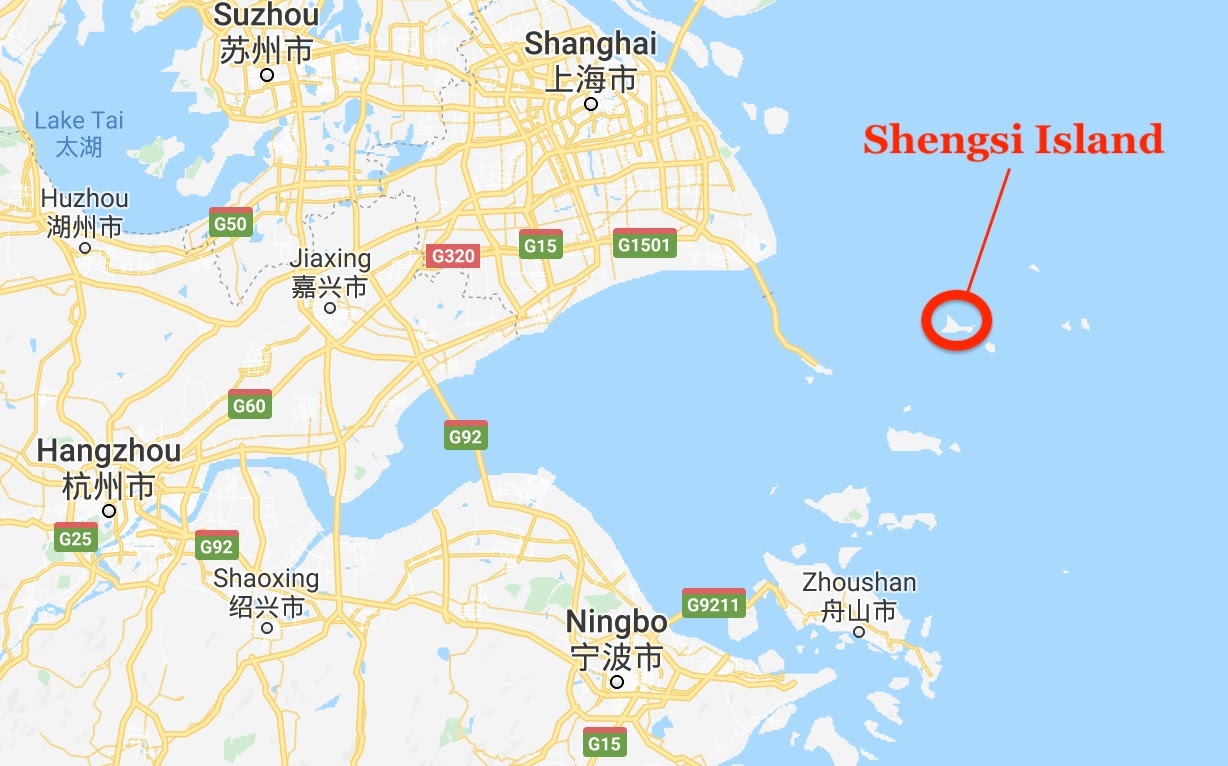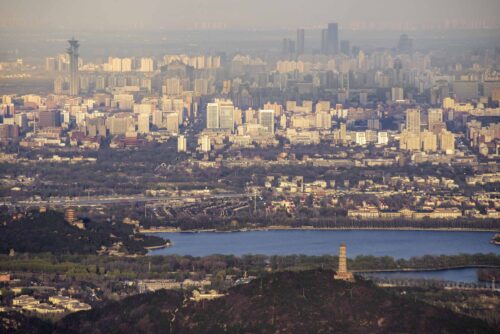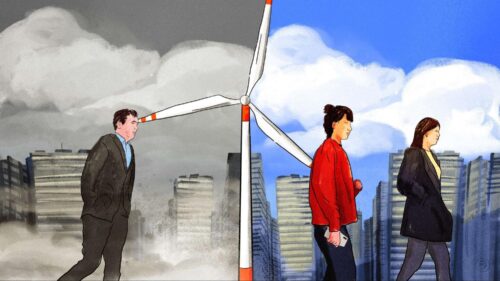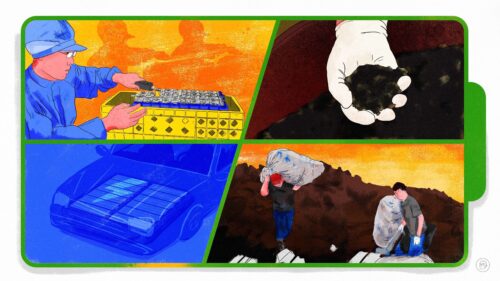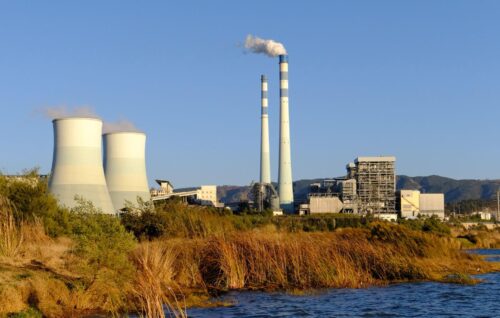Oceans of plastic: China’s Sisyphean fight to keep trash out of the water
By one measure, China contributes over a quarter of the plastic in the world’s seas. It’s a problem the government is well aware of — though fixing it has presented a bevy of challenges.


As a veteran environmentalist, Chén Lìwén 陈立雯 knows all about China’s problems taking care of its trash: how much of the countryside is still littered with illegal dump sites, and how plastic, especially, can turn up anywhere.
But the aftermath of a river-swelling rainstorm in rural Jiangxi Province last spring still caught her by surprise. When water levels dropped back to normal, bushes and trees along rivers emerged draped with plastic of all sorts and sizes, as if decorated for a depressing party. “And that’s just what got caught,” she says, standing beside a particularly affected section of the Badu River. “Imagine how much more flowed downstream.”
It’s been almost a year since Chen decamped to Longxi village, a few hundred houses tucked between lush hills and arranged around a sprawling, centuries-old ancestral hall. As the founder of NGO Zero Waste Villages, she is advising the local government in this corner of Jiangxi, an inland province in Eastern China, on how to best take care of its garbage. It is one of the first places in rural China to not just arrange regular pick-up, but also enforce waste sorting and other measures that should lead to less rubbish escaping into the environment.
A short stroll through the village, however, shows how much there is still to achieve. Leaving her vacation-home-turned-NGO-office, Chen spots trash nearly every step of the way: straws, bottles, the little plastic wrappers that attach straws to bottles, cigarette butts, single-use cups. In the koi pond at the village entrance, pieces of packaging swim with the fishes, and around the corner, at the spot where the local butcher sells his meat every morning, the stubs of the plastic bags he gives his customers litter the ground. “I’ve told him so many times,” says Chen with some frustration.
It’s a situation that reflects China at large. Much has been done in the last few years to better handle the country’s ever-increasing amount of trash, but pollution from plastics — wonder materials with a heavy environmental toll — persists.

Oceans of plastic
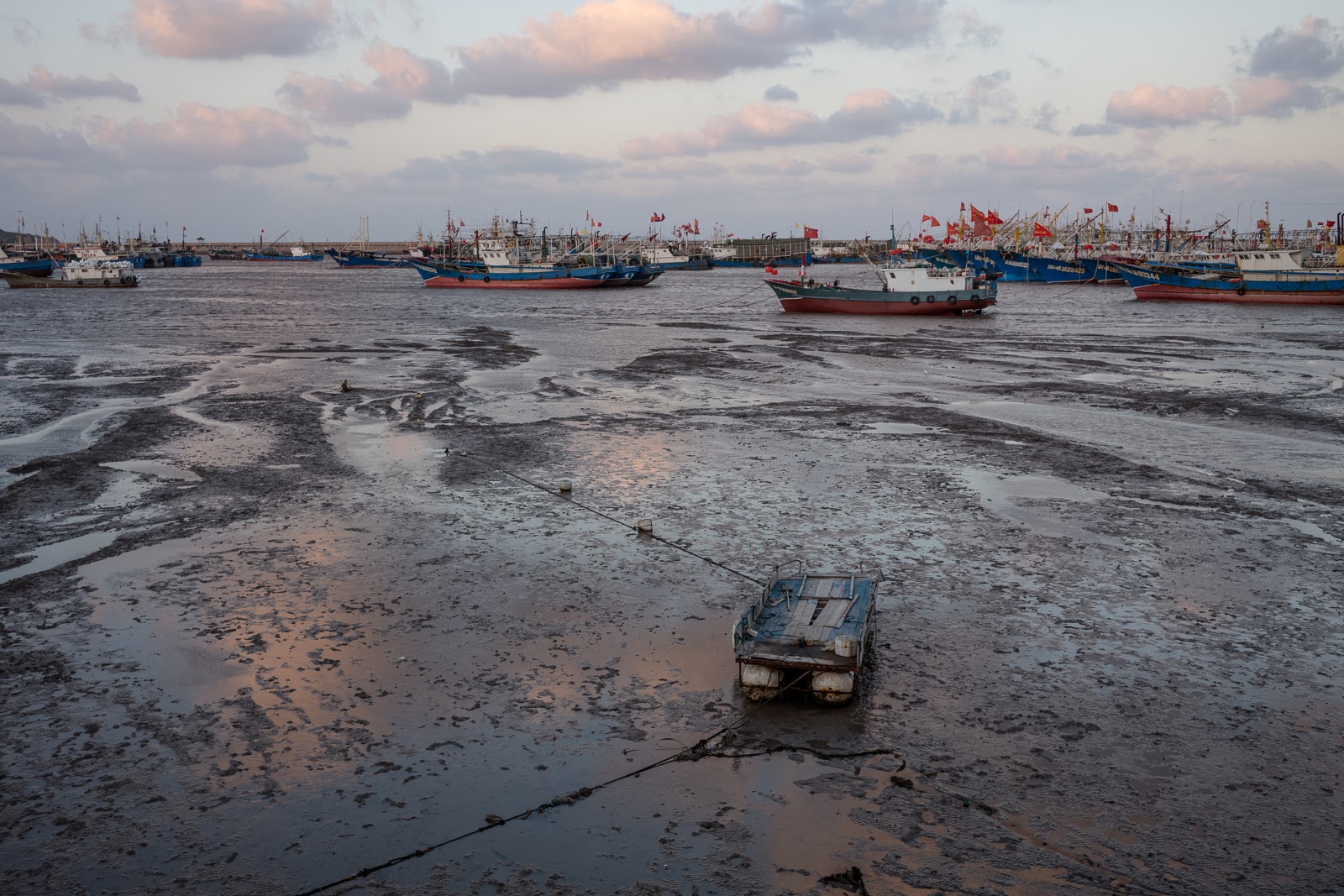
Over the last decade, the way modern lifestyles impact the planet is nowhere clearer than in the middle of the Pacific Ocean, where much of the 8 million tons of plastic that are estimated to end up in the world’s seas every year has congregated into giant so-called garbage patches. There, waves and sunshine break larger pieces into microplastics, which can more easily enter ecosystems and food chains — including our own. Humans on average ingest five grams of plastic every week, roughly the weight of a credit card.
Plastic that is properly thrown away is not without consequences, either. Most of it cannot be or is not recycled. Greenhouse gases emitted last year due to the production and incineration of plastic were equivalent to the emissions of 189 coal-fired power plants, a study estimated.
The global worry over plastic pollution’s effects on nature and ourselves has spurred initiatives such as straw bans and beach cleanups, and has also spawned a new scientific field. Its most impactful study, published in 2015, attempted to calculate for the first time how much every coastal country contributed to the total tally of oceanic plastic. The conclusion arrived as a shock in China, which the study said was responsible for an estimated 2.4 million tons a year, or over a quarter of the world’s total.
“The paper’s impact in China was enormous,” says Lǐ Dàojì 李道季, a professor at East China Normal University’s State Key Laboratory of Estuarine and Coastal Research, in Shanghai. “It showed everyone how serious it was, and that we definitely had to do something.” At the same time, Li and other Chinese experts were convinced the model used in the study made unfair assumptions about China, and as such overstated the country’s figure. Nevertheless, the country sprung into action.
In 2016, Li received central government funding to set up a five-year research project to monitor the plastic in China’s rivers and seas. His team has since published a litany of studies detailing how plastic is found anywhere from table salt shakers to the ocean’s deepest trenches. One paper rebuts the 2015 study, concluding that China’s pollution footprint is much smaller, at 845,700 tons of plastic escaping into the sea for 2017 — still the equivalent of about 85 billion half-liter plastic bottles.
China has also embarked on a campaign to better manage its trash, as part of a larger effort to clean up its air, soil, and water. Waste-sorting, which allows for more effective handling of different types of trash, is being rolled out across the country. A ban on imported waste, in effect since 2018, has also effectively put an end to China being the recipient of much of the developed world’s waste, which was being recycled or otherwise processed by mom-and-pop operations, often under squalid conditions.
Li suspects such measures are shrinking China’s contribution to seaborne plastic, but it’s hard to be sure. “Through our monitoring, we haven’t found that the amount of plastic debris has increased, but we didn’t see it decrease by much, either,” Li says. A complicating factor is that much of what they’re finding, he suspects, is plastic that was littered years ago. “We have no way to know whether it’s old or from this year,” he says. The Ocean Cleanup, an organization retrieving plastic floating in the high seas, has found that some of their catches date back to the 1970s. The government’s own yearly bulletin on the status of China’s coastal waters says 24 kilograms of floating trash — most of it plastic — was found per square kilometer in 2018, the most recent available figure, up from 22 kilograms the year before.

Upriver, 150 miles to the coast
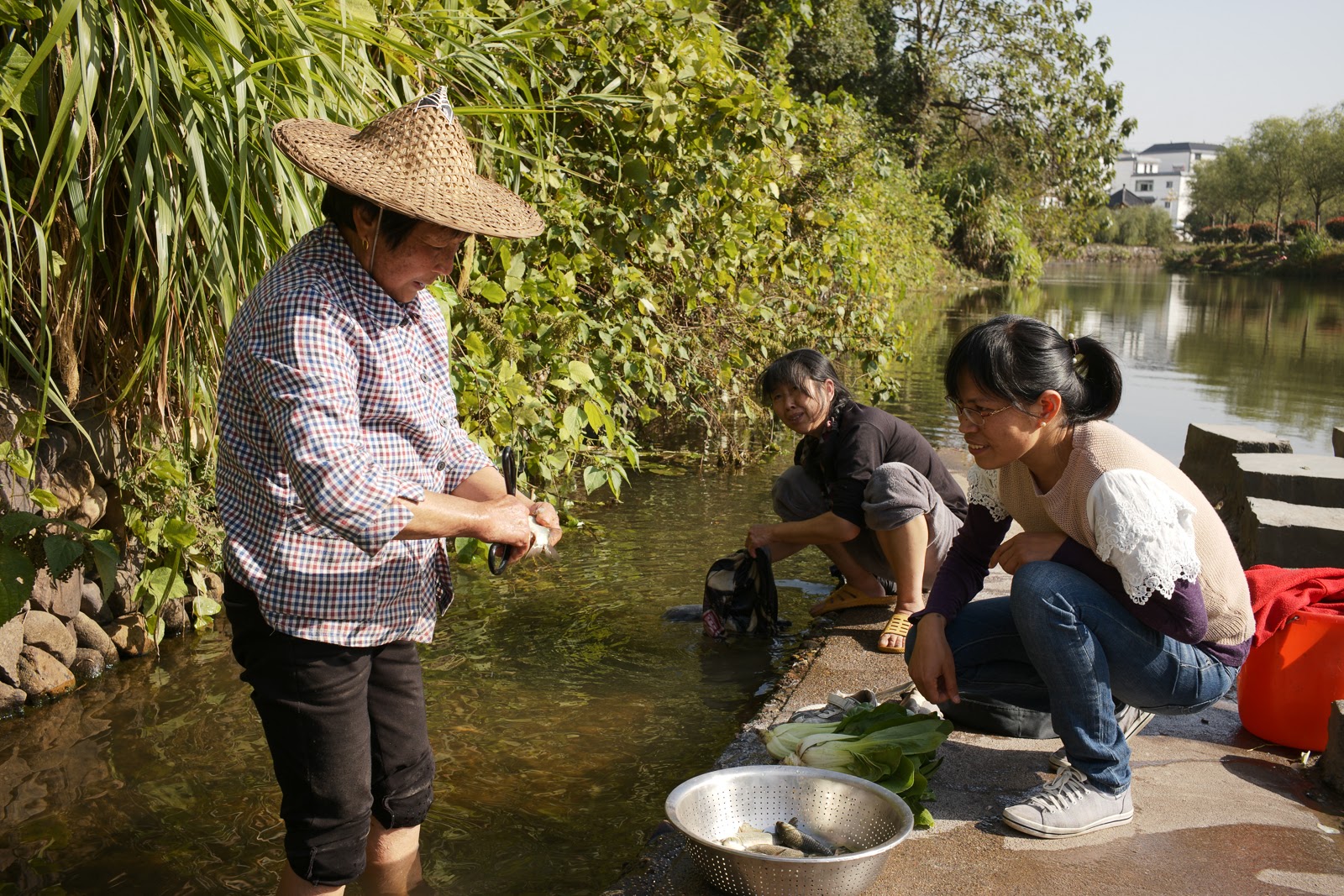
Depending on who you ask, rivers are the biggest source of oceanic plastic — other contenders are coastal populations and the fishing industry. No river carries more plastic to the ocean than the Yangtze, China’s longest waterway, according to a 2017 modeling study that estimated its annual contribution at 333,000 tons, or the equivalent in weight of the Empire State Building. (Chinese experts also dispute this finding).
The people of Longxi are part of this statistic — the Badu, the river near the village that is partly draped in plastic, ultimately joins the Yangtze. A piece of plastic throughtlessy thrown away here could be picked up by the village’s maze of rice paddies and gullies, flow into a river, and end up in the ocean. In total, some 400 million people live along banks of the Yangtze and its countless tributaries. They litter, wash their synthetic clothing, wear down their car tires, or contribute in other ways to pieces of plastic ultimately flowing into the East China Sea.
In the countryside, waste management remains an issue. Researchers found in 2016 that only 22 percent of sampled villages took adequate care of their garbage. According to Chen, founder of Zero Waste Villages, almost everything people threw away could be reused until about a decade ago. But when the 2008 global financial crisis hit Chinese exporters hard, the government’s solution was to prop up domestic consumption, especially the until-then largely untapped rural market. Anything from snack wrappers to mobile phones flowed into villages, with no garbage collection system for when it was inevitably thrown away. “Slowly, garbage showed up everywhere,” Chen says.
At first, villages would dump their trash out of sight, somewhere uphill or directly into a river, or burn it in rudimentary incinerators, Chen says. This still happens in large tracts of countryside, despite a 2015 directive to collect trash and transport it to waste processing facilities. Longxi, however, is ahead of the pack. It is one of 12 villages in Dongyang Township, which in December 2018 told its 28,000 residents to start throwing kitchen waste into a separate bin so it can be composted instead of landfilled. By weight, this has cut the township’s landfill-bound trash in half, and eases the load on garbage processing facilities, which leak microplastics and other pollutants into the environment when they are overburdened, as many in China are. “In the past few years I’ve been to many counties to visit landfills and incinerators, and they’re all operating way beyond their limits,” Chen says.
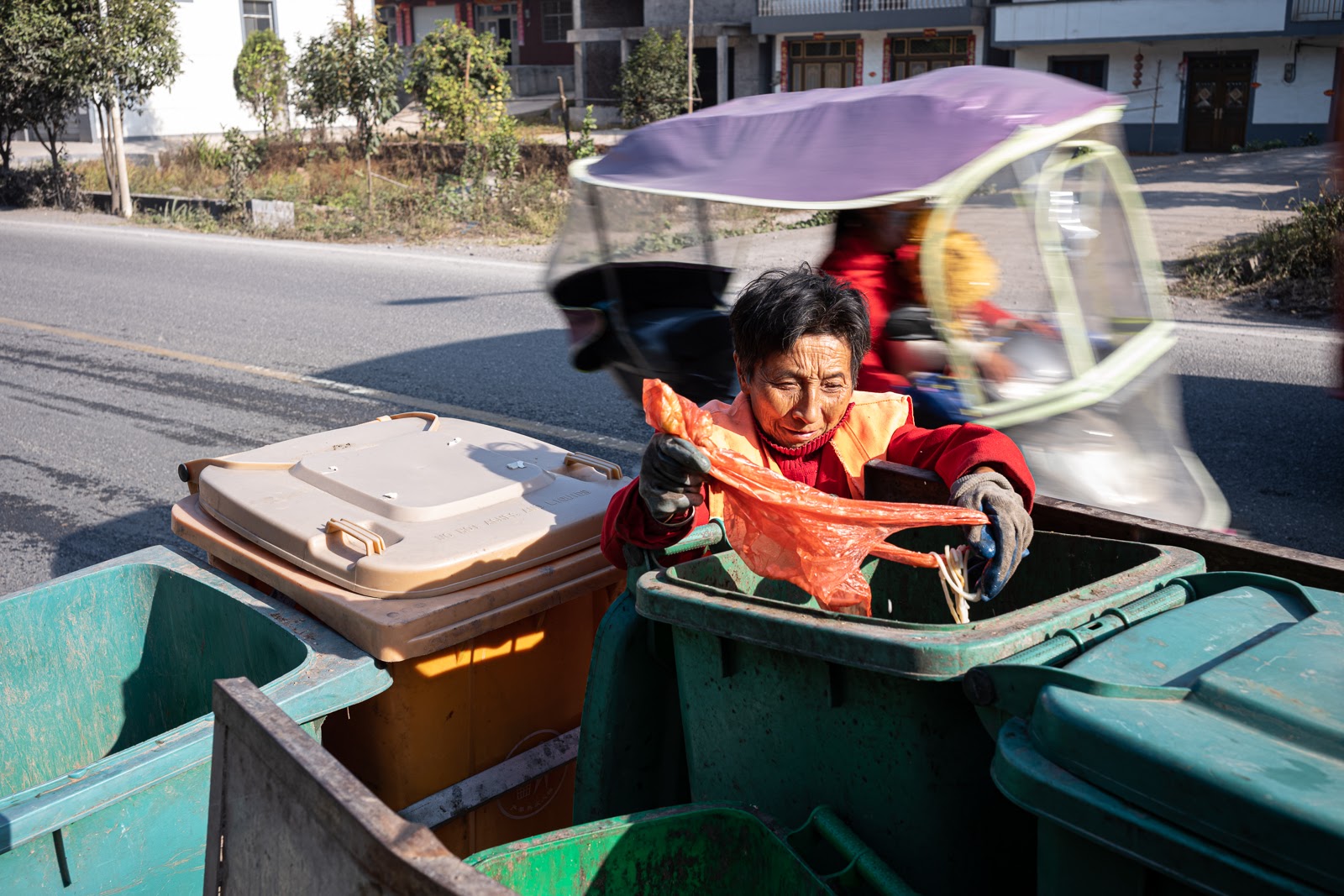
To Chen, the township’s waste-sorting drive has mostly been a success — even the resulting compost has proven so desirable that farmers have been taking it away surreptitiously. But she worries about what might happen when new campaigns replace it atop the local government’s list of political priorities.
One of the first villages where Chen’s organization launched a waste sorting campaign was her own hometown of Xicai, in northern China’s Hebei province. Chen, who is soft-spoken but stern when it comes to people’s trash-related transgressions, would go door-to-door. “At the start, you need to constantly remind families,” she says. Initial results were promising, but on a recent return trip Chen was dismayed to find that, in her absence, local officials had not taken on the task in her stead. Villagers had gone back to throwing everything in the same bin. “I was so angry,” she says. “I talked to this and that department, and still nobody is paying attention.”

Yangtze estuary
Another behavior that will need to be changed to curb plastic pollution is a growing throwaway culture. Food delivery and ecommerce especially have grown the consumption of single-use plastics. Last year, China’s courier services delivered more than 60 billion packages — more than half the world’s total — using untold amounts of plastic wrapping and enough adhesive tape to circle the earth hundreds of times. Though about a quarter of all plastic is recycled in China, the recycling rate for plastic used in parcel packaging is just 5%, environmental NGOs wrote in a report on the industry last year. Food delivery’s plastic footprint is also enormous. In the last quarter of 2019, for example, industry leader Meituan handled 27.2 million orders a day, with many restaurants using plastic bags, bowls, and other single-use items.
Rendu, a Shanghainese NGO that has been working for years to determine how much waste floats in China’s waters, has seen this consumption pattern reflected in its data. Every two months starting in 2015 — until the COVID-19 pandemic forced cancellations — it and other NGOs around the country have organized cleanups of the exact same stretches of coast, together creating a longitudinal study of seaborne pollution from the Bohai Bay, near Beijing, to the South China Sea.
On a gray Saturday in November, some two dozen volunteers board a bus headed for the southeastern tip of Shanghai, as other groups set off for different spots in the Yangtze estuary. On arrival, after those who expected a picturesque beach are instead greeted by a dull concrete embankment, the volunteers recite a pledge, fists raised to their temples: “Let us use our hands to clean up coastal garbage; our pens and scales to record type and amount; scientific data to show how mankind has polluted the sea; and our actions to fight together to protect the origin of life.” They then set out to pick garbage from between the seawall’s concrete beams, each group sticking to their own five-meter-wide section. Scavenger hunt completed, they categorize and weigh each piece, and note any brands they see on packaging material. Soon enough, after a garbage truck has collected their haul, everyone boards the bus, their afternoons donated to the cause of good data.
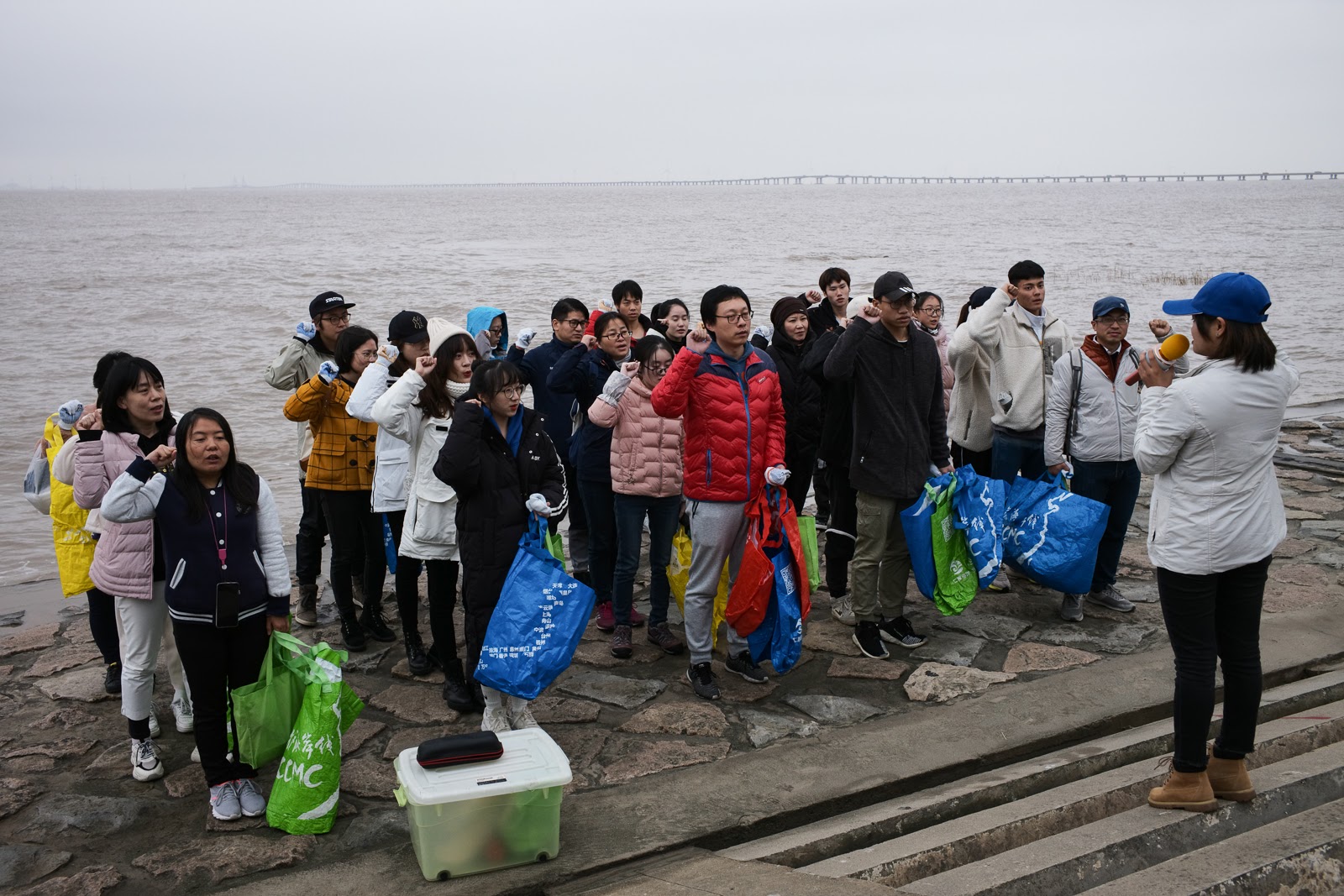
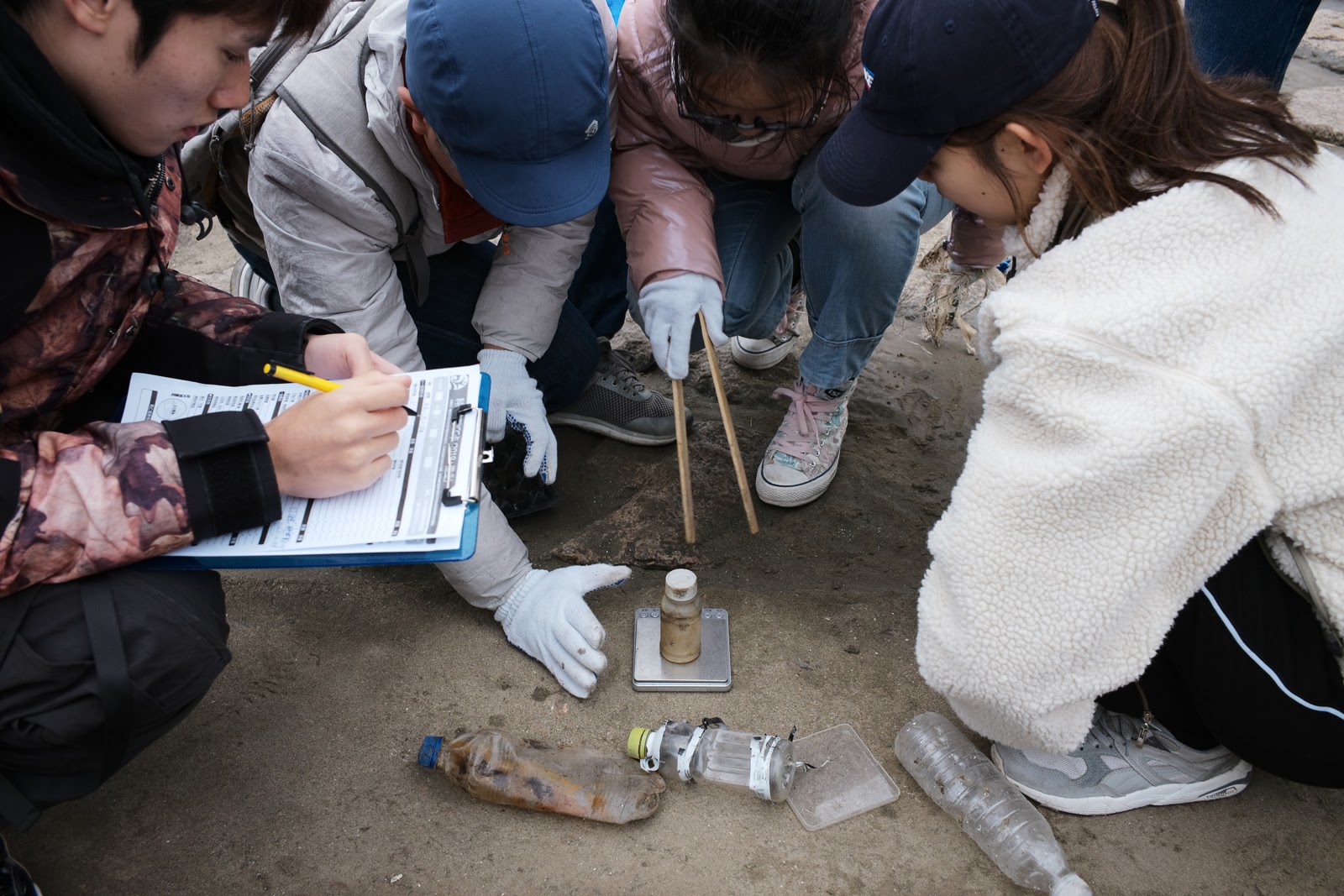
The resulting figures show a declining trend before a steep uptick in 2018, according to Rendu’s latest report. Liú Yǒnglóng 刘永龙, Rendu’s chairman, is cautious to draw any conclusion. “I reckon it would be due to a random factor, such as measurements at several sites in 2018 happening just after a typhoon,” he says in the NGO’s office. Notably, the proportion of plastic among their catches has been going up, he says. “The overall figure reflects on whether our trash management is effective. But the proportion of plastics reflects on the changes in our lifestyles.”
To truly solve the issue of marine plastic, people need to limit their consumption, Liu says. It’s a belief he has put into practice: Single-use plastic cups and takeout food are not allowed in Rendu’s office.
Acknowledging the mounting issue, the Chinese government in January announced a sweeping set of bans and restrictions on the production and consumption of single-use plastics, to be phased in before 2025. “It’s encouraging to see single-use plastics finally named outright as the core of China’s plastic pollution crisis,” says Cháng Yuǎn 常远, plastic campaigner at Greenpeace in Beijing. But, crucially, the regulations stipulate that degradable plastic items are exempt. Such materials exist, but they commonly only degrade under specific conditions in specialized facilities, Chang says. He fears such plastic will be hard to recover, and give people a license to litter. “People might think, ‘Oh that’s disposable, you can just throw it away, it will disappear in nature by itself,’” he says. “We call it a false solution.”
How enthusiastically these new regulations will be enforced is another potential worry. “The policy lacks regulatory incentives,” Chang says. Earlier attempts to ban plastic bags and styrofoam food containers went largely ignored.

At sea
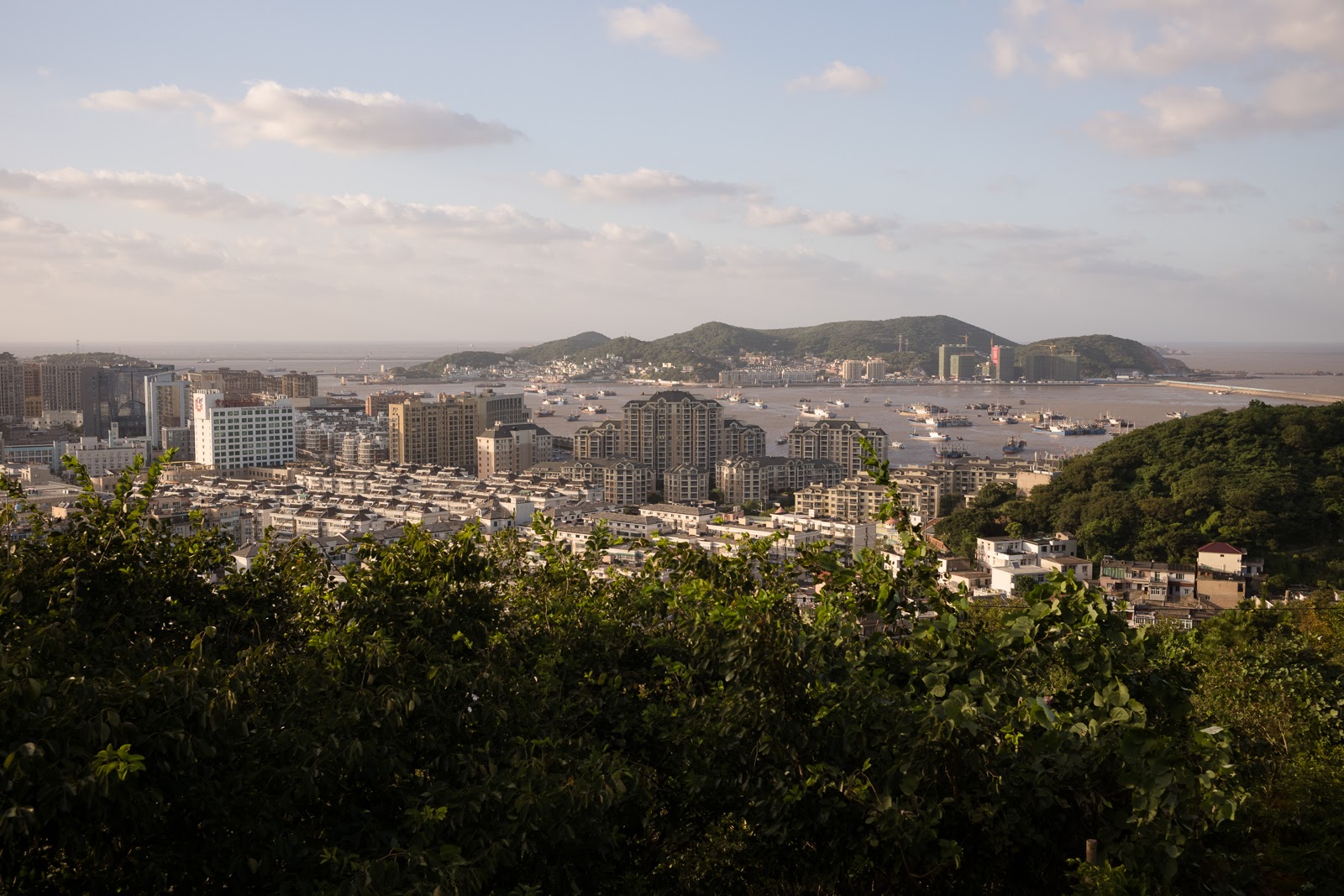
If the regulations do succeed in their ambitions, it would turn the tide on a decades-long trend. Zhèng Yǒngxìng 郑永兴, a retired fisherman, lives on Shengsi Island, located some 50 kilometers off the shore near where the Yangtze River meets the East China Sea. Born in 1958, 20 years before China began embracing capitalism and experiencing runaway economic growth, Zheng says the water around the island used to be much cleaner than it is today. “When we started having plastic bags and styrofoam, that’s when we got seaborne garbage,” he says. “There wasn’t any when we were young.”
He admits that, in the past, he’d think nothing of throwing things into the water himself. But that changed when he got a new job. In retirement, he has swapped the hard work of catching fish for fishing plastic. Zheng is part of the four-man crew on the Zheshengqing (short for Zhejiang Province, Shengsi Island, and “clean”) Number 0001. Together with a sister vessel, the bright red-and-yellow boat goes on daily patrols around Shengsi and other islands in search of floating trash.
Zheng and his colleagues never have to look for long. On a windy fall day, as the Zheshengqing navigates rows of fishing boats and jostles for space with harbor taxis, they fill up half a dozen bags in the space of minutes. Using nets at the end of long bamboo poles, much of what they haul onboard is plastic. By volume, styrofoam boxes, popular in China’s fishing industry, make up 40 percent, says the boats’ proprietor, Yáng Shìchāi 杨世钗. The remainder is mostly bottles and other forms of packaging, and on occasion larger items like discarded furniture. On average, his two crews collect about 750 cubic meters of trash per month.
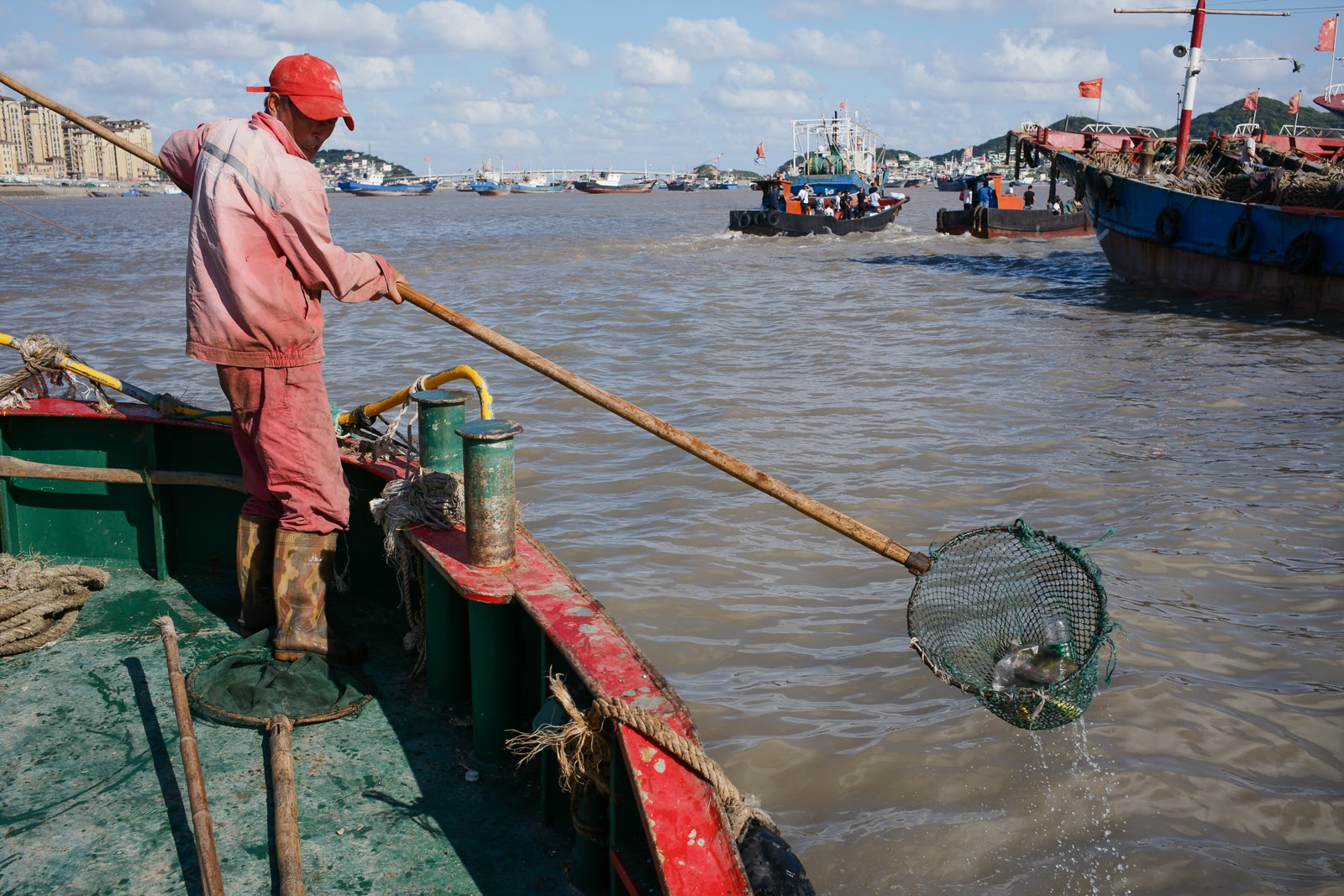
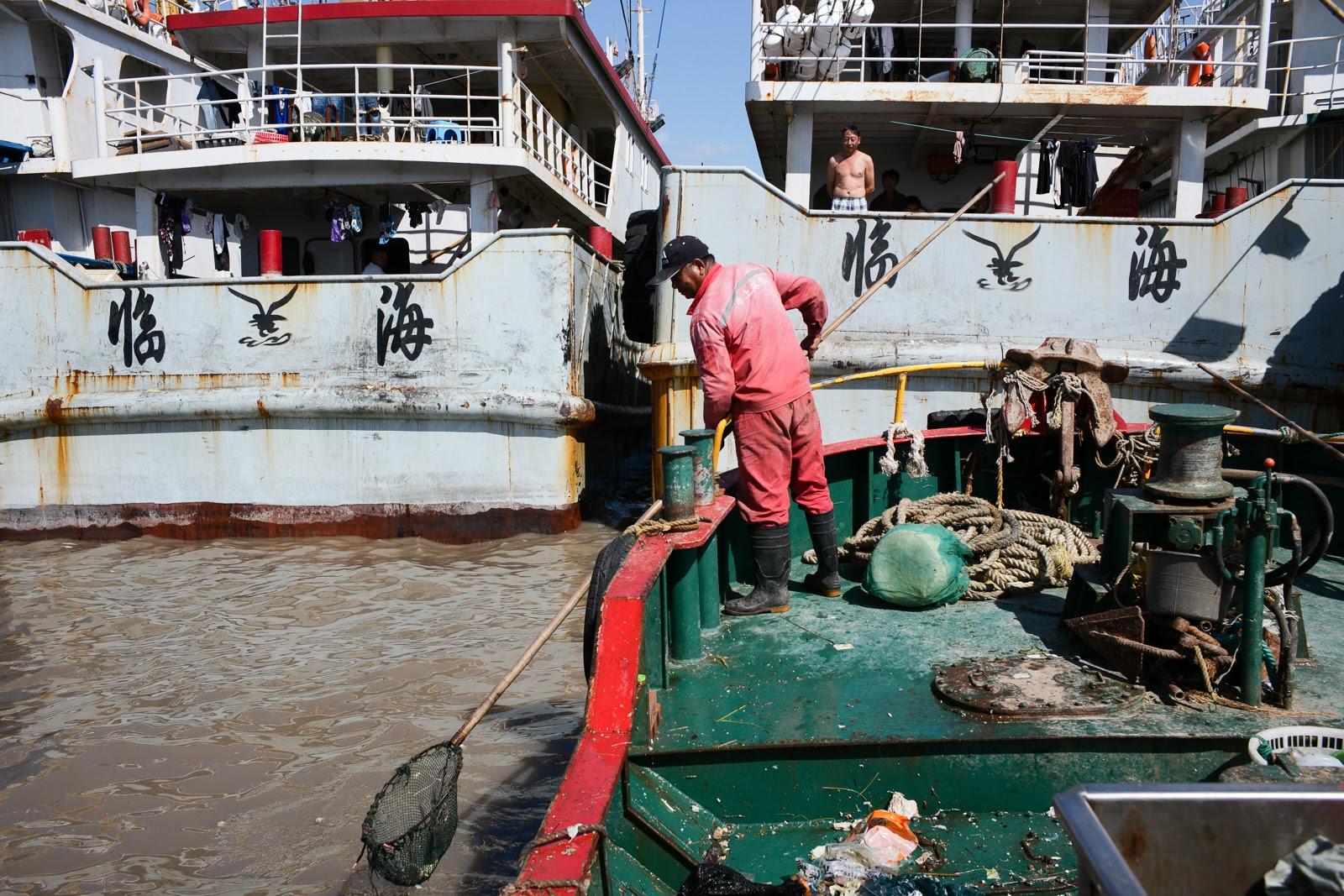
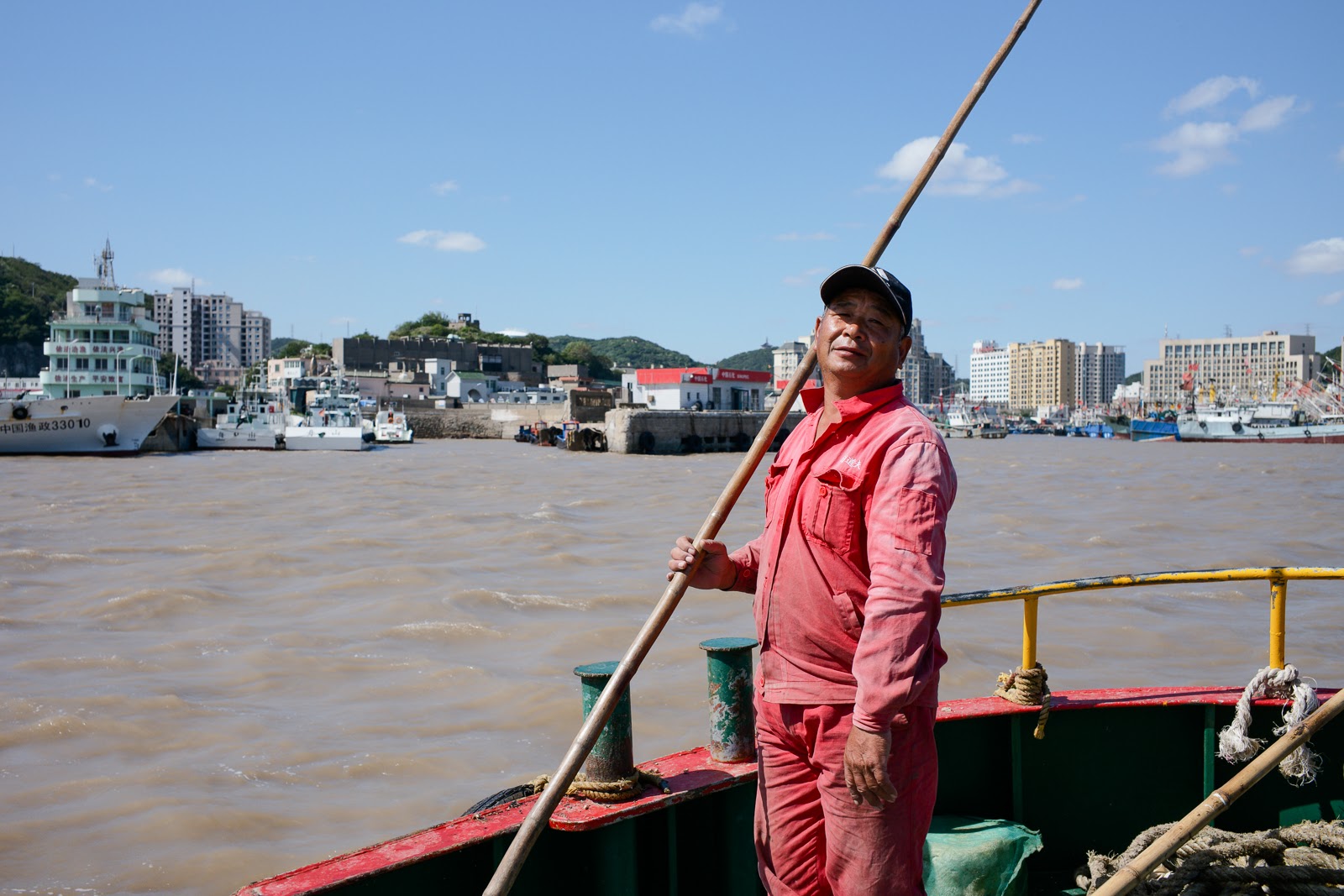
The boats are a charity project, Yang explains in erratic sentences that are thick with the accent of his native Taizhou, a coastal city to the south. He moved to Shengsi Island in 1998 and immediately noticed the pollution. “The ocean is humanity’s biggest trash can,” he likes to say. Running a company supplying oil and other necessities to international ships, he saw how foreign crews took much better care of their garbage than Chinese sailors, and vowed to do something about it when he had enough money.
In 2015, Yang began paying for one boat and crew to start collecting waterborne trash. After domestic media praised his efforts, the initially uninterested local government felt pressured to help fund him, he says. The government also gifted him a jinqi, a small red banner that proclaims Yang a “cleaner of the ocean.” It’s on proud display in his office, hanging next to the flat-screen TV on which he can watch live video feeds from his two boats. “Look, my employees are at work,” he says, enjoying the view of the deck filling up with black garbage bags.
Although Yang’s environmental work has received many plaudits, he doesn’t fit the mold of a traditional activist — he drives a big SUV and doesn’t seem well-versed in the larger concepts of the green movement, theorizing at one point that removing waterborne garbage is a solution for sea-level rise. “If you put in a lot of leaves, the water will go up,” he says, holding his tea cup by means of illustration.
He knows that, with how much trash escapes into the sea every day, his project is to some extent a Sisyphean enterprise. The way to stop trash from ending up in the sea, he says, “should depend on government rules, similar to drunk driving.” Fishermen especially, who sometimes dump trash overboard while Yang’s crew are working to pick it out just meters away, should be subjected to better oversight.
When asked whether consuming less plastic might be a solution, Yang resolutely disagrees: Having lots of plastic is a sign of being a developed country. “Things like plastic cola bottles, those are a necessity for everyone,” he says. “If you buy groceries and you have no plastic, where are you going to put them?” But, he laments, a tea cup can only be filled so far before it spills over — and people won’t stop putting in more leaves.

